In Finland there are four large carnivores; bear, lynx, wolverine and wolf. I have written posts about
bears,
lynxes and
wolverines here in my blog earlier. Now I want to tell you about the wolf in Finland and specially in Lapland. The wolf is the second largest carnivore after the bear in Finland.
The wolves (Canis lupus) are social members of the dog family and live many together in packs. They have excellent senses of hearing and smell, and can communicate using posture, facial expressions, scent and a variety of barking and howling calls. The howling call of a wolf in the night is impressive and is started by a single wolf, who may then be joined by a chorus. Wolves howl to communicate with each other and to define their territories. The chances to hear wolves howling in Lapland are really small. As you enter the cave and walk your way down to SantaPark you can hear wolves howling from the loudspeakers….
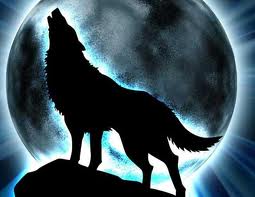
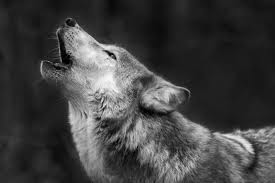
T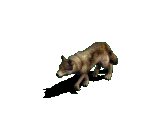 hey mainly move around during the twilight hours and they can move over distances of tens of kilometers in a single day. An old traditional story tells that a wolf could move over nine treeless bogs (valleys) in one night. In a pack only the dominant alpha pair actually breed, but the pack help to raise the cubs. Three to six cubs are born to a pack each year. Females become sexually mature at the age of about two years, while males typically mature a year later. Wolves mate in February or March, and their cubs are born a couple of months later. Cubs usually leave the pack at the age of 1-2 years. They go far away from their birthplace searching for a mate and a territory of their own.
hey mainly move around during the twilight hours and they can move over distances of tens of kilometers in a single day. An old traditional story tells that a wolf could move over nine treeless bogs (valleys) in one night. In a pack only the dominant alpha pair actually breed, but the pack help to raise the cubs. Three to six cubs are born to a pack each year. Females become sexually mature at the age of about two years, while males typically mature a year later. Wolves mate in February or March, and their cubs are born a couple of months later. Cubs usually leave the pack at the age of 1-2 years. They go far away from their birthplace searching for a mate and a territory of their own.

In Finland there is approx. 185-200 wolves at the moment. They were counted in March 2019. Most of the wolves live in the eastern parts of Finland. About 5-10 wolves were found in the Lappish area; that is a few more than last year. The wolf is an endangered species in Finland and hunting is prohibited since 1973. Hunting is a subject to licence only.
Wolf is the largest member of the dog family living in wilderness. The length of the body is 100-140 cm, the tail is 35-50 cm. Weight is usually 20-50 kg, but there has been found also bigger individuals. The male wolf is lager than the female.

 The coat is mainly yellowish-grey, but there are variations. People often mistake big dogs for wolves, and wolves can be most easily distinguished from wolf-like dogs by their slanting eyes – if you come so near you can see the eyes – and the way they hold their tails at a downward angle. Their tracks are very hard to tell apart from dogs’ tracks. Wolves often walk straight, while dogs tend to wander more. The wolves’ footprints are often larger than the footprint of dogs.
The coat is mainly yellowish-grey, but there are variations. People often mistake big dogs for wolves, and wolves can be most easily distinguished from wolf-like dogs by their slanting eyes – if you come so near you can see the eyes – and the way they hold their tails at a downward angle. Their tracks are very hard to tell apart from dogs’ tracks. Wolves often walk straight, while dogs tend to wander more. The wolves’ footprints are often larger than the footprint of dogs.
Wolves hunt deer and elk and in Lapland reindeer. They hunt in packs. They kill and eat almost every part of the kill; they are even biting larger bones into pieces and all that is left could be a few scraps of the skin. They sometimes hide their kill.
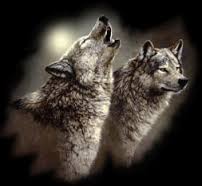 In Finland you can see wolves in Ranua zoo and in Ähtäri zoo. To keep wolves in a zoo there need to be a large area for the wolves to move around in. In Ranua zoo there are three wolves at the moment. They were all born in the zoo in 2009. The parents, the alpha pair, were Leena ja Ville. They were brought to Ranua from Sweden in 2006 and 2007. Their first brood – in 2008- were four cubs; Halla, Huurre, Kuura ja Halti. Their second brood, in 2009, were also four cubs. At the moment there are three wolves in Ranua zoo. I have to find out their names.
In Finland you can see wolves in Ranua zoo and in Ähtäri zoo. To keep wolves in a zoo there need to be a large area for the wolves to move around in. In Ranua zoo there are three wolves at the moment. They were all born in the zoo in 2009. The parents, the alpha pair, were Leena ja Ville. They were brought to Ranua from Sweden in 2006 and 2007. Their first brood – in 2008- were four cubs; Halla, Huurre, Kuura ja Halti. Their second brood, in 2009, were also four cubs. At the moment there are three wolves in Ranua zoo. I have to find out their names.
The wolf has never been really wanted in Finland. In the Sami language the wolf is gumpe. The Sami people were afraid of the wolf and still are, due to that the wolves kill their reindeer. The ancient story about wolves tells that the wolves had the magic skills to make people sleepy. The Sami people use to yoik as they are watching the reindeer. Their yoiks are about the nature, people and animals. The wolves are frightened as they come near the people and the reindeer, when they hear the yoik. But soon they get used to the yoik and the Sami has to sing a new yoik. They have to come up with new yoiks all the time to keep the wolves away from the reindeer.
A long time ago the wolf was also a valued animal. There is an old yoik about the wolf Suologievra. The name means “the strong on the island”. In the ancient days people used to think the world was like an island in a big sea.
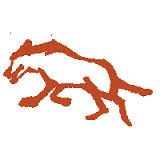
Once upon a time Stuorra-Jownna, or Jouni the Great from Utsjoki in the North of Lapland wanted to become a wolf. The witches had told that, if you go around a curved tree counterclockwise several times you finally become a wolf. So did Jouni. He walked around the tree until he was changed into a wolf. Then he run around in the shape of a wolf and he visited many reindeer ranges. He could stay as a wolf for two weeks at a time. One day he noticed his time was ending; actually on the same night, and he still had nine valleys ahead to run. If he could not make it to the tree in time, he would be doomed to stay as a wolf for the rest of his life. There is an old saying: “The wolf always finds his way”. And that night he run over nine valleys and reached the tree, where he had changed into a wolf, in time. This time he run around the tree clockwise and during the run he little by little changed back into a human being. (From the book Sami Mythic Texts and Stories by Elina Helander-Renvall, 2011)






 hey mainly move around during the twilight hours and they can move over distances of tens of kilometers in a single day. An old traditional story tells that a wolf could move over nine treeless bogs (valleys) in one night. In a pack only the dominant alpha pair actually breed, but the pack help to raise the cubs. Three to six cubs are born to a pack each year. Females become sexually mature at the age of about two years, while males typically mature a year later. Wolves mate in February or March, and their cubs are born a couple of months later. Cubs usually leave the pack at the age of 1-2 years. They go far away from their birthplace searching for a mate and a territory of their own.
hey mainly move around during the twilight hours and they can move over distances of tens of kilometers in a single day. An old traditional story tells that a wolf could move over nine treeless bogs (valleys) in one night. In a pack only the dominant alpha pair actually breed, but the pack help to raise the cubs. Three to six cubs are born to a pack each year. Females become sexually mature at the age of about two years, while males typically mature a year later. Wolves mate in February or March, and their cubs are born a couple of months later. Cubs usually leave the pack at the age of 1-2 years. They go far away from their birthplace searching for a mate and a territory of their own.

 The coat is mainly yellowish-grey, but there are variations. People often mistake big dogs for wolves, and wolves can be most easily distinguished from wolf-like dogs by their slanting eyes – if you come so near you can see the eyes – and the way they hold their tails at a downward angle. Their tracks are very hard to tell apart from dogs’ tracks. Wolves often walk straight, while dogs tend to wander more. The wolves’ footprints are often larger than the footprint of dogs.
The coat is mainly yellowish-grey, but there are variations. People often mistake big dogs for wolves, and wolves can be most easily distinguished from wolf-like dogs by their slanting eyes – if you come so near you can see the eyes – and the way they hold their tails at a downward angle. Their tracks are very hard to tell apart from dogs’ tracks. Wolves often walk straight, while dogs tend to wander more. The wolves’ footprints are often larger than the footprint of dogs. In Finland you can see wolves in
In Finland you can see wolves in 